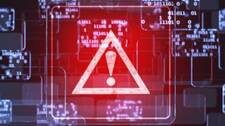Getting Started With Continuous Monitoring

Source:-https://devops.com/
DevOps continues to gain traction among organizations as demand grows for digital product and platform development. According to Gartner, 87% of business leaders believe digitalization is a priority. Every DevOps transformation requires a dedicated, continuous learning process and effective implementation to reach maturity. If a practice or pattern is passed over or ignored, it can put a damper on DevOps success. Continuous monitoring, for example, is a very important part of every DevOps life cycle that is often overlooked.
Through effective continuous monitoring efforts, organizations can scale and deliver digital products and platforms faster and more securely. In fact, these continuous monitoring advantages tie directly to modern customer needs. If they haven’t already, business leaders must embrace continuous monitoring along every point of the DevOps life cycle. These best practices can help you get started.
Understanding Continuous Monitoring
The practice of continuous monitoring helps to collect and analyze outcomes, statuses, exceptions and key metrics within each step of the DevOps process – from development to deployment and production. Additionally, it offers deep insight for DevSecOps teams by enabling compliance triggers and security alerts configuration. It allows the organization to detect issues or security concerns throughout every phase of the DevOps lifecycle.
Understanding what continuous monitoring does is a good start. However, to effectively adopt continuous monitoring, the organization must know what to monitor.
What Should Be Monitored
An effective continuous monitoring process collects enough data to gain sufficient understanding of both successes and failures of the organization’s systems and processes. Some of the events collected by the continuous monitoring systems will require immediate attention, while others may lead to longer-term strategy discussions.
Collecting the right information is always tricky considering the number of endpoints that generate logs and events. One should rank the significance of each source in relation to the type of data it produces, the functional area it supports and the impact it has on the system’s performance, as well as on organization’s goals and commitments (requirements posed by SLA’s, regulations, contracts, etc.).
A combination of technology and strategy helps ensure that the right data is collected at the right time. The next step, and perhaps one of the most significant challenges, is finding the balance between monitoring and analysis.
How to Achieve Balance
Balance is, by far, one of the most difficult decisions in log monitoring and analysis. Gather too little data and risk missing early trouble indicators or important alerts. Collect too much and get buried in analysis paralysis – essentially, leading to the same situation of overlooking items of significance. Striking the right balance requires understanding the system’s continuous monitoring processing capacity and using its full potential. This may also involve data preparation steps during intake to ensure optimal processing and storage of the collected material.
Offloading mundane tasks and parts of the analysis to machine learning and artificial intelligence (ML and AI) and fuzzy logic systems will enable big data processing gains. With this approach, the continuous monitoring capacity can be significantly increased, along with the semantic quality of the alerts and notifications produced by the system. As a result, security operation center (SOC) staff can devote their attention to the analysis of events which are more meaningful to the system and operations, leading to a more efficient continuous monitoring process.
A DevOps transformation will likely not reach full maturity unless the organization applies continuous monitoring to the DevOps life cycle. Although often overlooked, it remains central to DevOps success. With this in mind, a basic understanding of continuous monitoring, what to monitor and finding the balance between log monitoring and analysis, serve as a foundation for getting started with continuous monitoring.